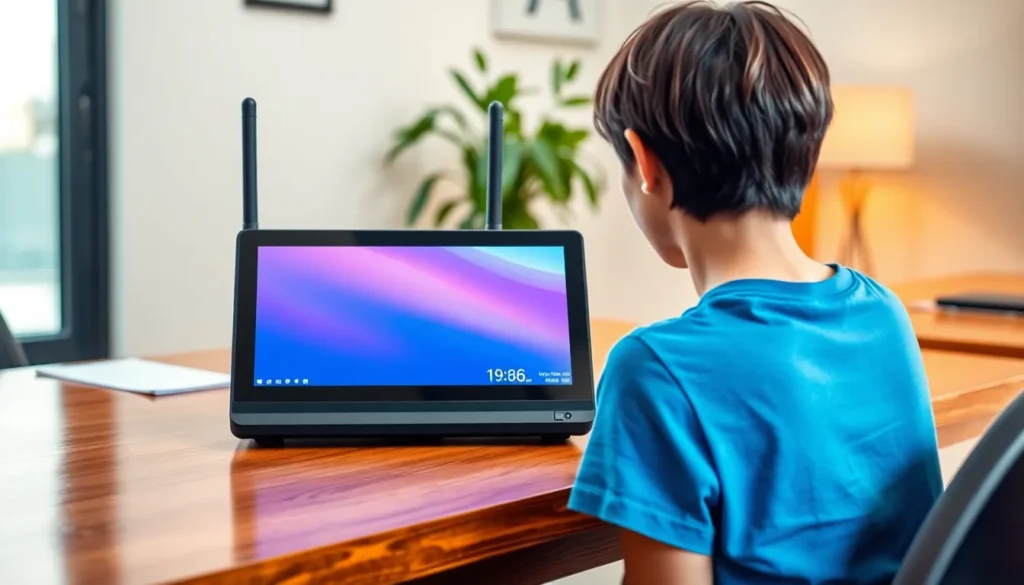In the world of 3D printing, resin printers are like the artists’ tools that create stunning masterpieces. But just like any artist, they need a little TLC to keep producing those jaw-dropping designs. Enter the not-so-glamorous but absolutely essential task of cleaning. It’s not the most exciting part of the process, but it’s a necessary evil that separates the pros from the amateurs.
Table of Contents
ToggleOverview of Resin Printer Cleaning Methods
Cleaning methods for resin printers vary based on the specific needs of the printer and the type of resin used. Users commonly employ several effective techniques to maintain optimal performance.
One widely used method involves isopropyl alcohol (IPA) for rinsing prints. The high alcohol content efficiently removes uncured resin from the surface. Users often immerse the printed objects in a container filled with IPA, ensuring thorough exposure.
Another popular technique utilizes ultrasonic cleaners. These devices produce high-frequency sound waves that create microscopic bubbles in the cleaning solution. Bubbles collapse, generating powerful cleaning action that dislodges resin from intricate details and hard-to-reach areas.
Cleaning stations designed for resin printing also exist. These stations typically house a wash station and a cure station. Some models feature automated solutions to streamline the entire cleaning process, enhancing user convenience.
Using a brush or soft cloth can help remove excess resin from larger surfaces. Brushes with firm bristles effectively scrub stubborn areas without damaging the print. Soft cloths assist in achieving a polished finish.
For those concerned about environmental impact, bio-based cleaning agents are available. These eco-friendly options target uncured resin with effective and less harmful ingredients. Users may find satisfaction in sustainable practices while maintaining thorough cleaning routines.
Ultimately, the best cleaning method depends on individual preferences, print complexity, and user commitment to maintenance. A dedicated approach ensures longevity and quality in resin printing.
Importance of Proper Cleaning
Proper cleaning plays a vital role in maintaining resin 3D printers. It ensures optimal function and extends the life of the equipment.
Preventing Clogs and Damage
Regular cleaning prevents clogs in the printer’s resin tank and nozzle. A blockage can lead to significant issues, resulting in costly repairs or decreased performance. Uncured resin, if not adequately removed, hardens and creates difficulties during future prints. Keeping components clean avoids wear and tear, contributing to a smoother operation. It also supports efficient maintenance schedules, ensuring that users can avoid interruptions in their printing projects.
Ensuring Print Quality
A clean printer directly impacts print quality. Residual uncured resin can lead to imperfections in finished prints, affecting surface details and overall aesthetics. Washing prints thoroughly before curing removes unwanted residue, resulting in cleaner, more accurate layers. Achieving meticulous details relies on the printer’s condition, and adherence to proper cleaning methods enhances this. Consistent maintenance enables users to produce professional-level results, meeting or exceeding expectations with every print job.
Common Cleaning Techniques
Various cleaning techniques ensure efficient maintenance and optimal performance of resin 3D printers. Users often select a method based on personal preference and printer requirements.
Manual Cleaning
Manual cleaning involves using brushes or soft cloths to remove uncured resin from prints and printer components. This technique allows for precision, particularly in detailed areas. Often, operators choose to wipe the print surfaces and clean the resin tank with care. Consistent manual effort prevents hardened resin from causing future issues. Additionally, individuals can perform this task at intervals during their printing sessions, ensuring cleanliness and quality.
Ultrasonic Cleaning
Ultrasonic cleaning utilizes high-frequency sound waves to create microscopic bubbles in a cleaning solution. These bubbles collapse violently, generating tiny shock waves that effectively dislodge uncured resin. Users benefit from this method by placing prints in an ultrasonic cleaner filled with isopropyl alcohol or a suitable solution. Cleaning time usually ranges from 3 to 10 minutes, depending on the print’s complexity. Efficient and thorough, this technique enhances the quality of finished prints, minimizing the chance of imperfections.
IPA Soaking
IPA soaking entails submerging prints in isopropyl alcohol for a set duration, typically 5 to 10 minutes. This method proves effective in dissolving uncured resin while allowing a gentle cleansing action. Users can opt for a container that fully covers the prints, ensuring all surfaces receive adequate exposure. Once soaking is complete, rinsing prints under clean water removes any remaining residue. Effective soaking results in a cleaner final product, which ultimately enhances the overall aesthetics and accuracy of the print.
Best Practices for Cleaning
Cleaning resin 3D printers is essential for maintaining equipment efficiency and ensuring high-quality prints. Following best practices can significantly enhance overall performance and longevity.
Safety Precautions
Safety is a top priority when cleaning resin printers. Proper protective gear, such as gloves and goggles, minimizes exposure to harmful chemicals. Ventilating the workspace ensures that any fumes dissipate, reducing inhalation risks. Additionally, keeping cleaning agents out of reach of children and pets prevents accidental exposure. Dispose of uncured resin and cleaning materials according to local regulations. Using reputable products and manufacturers helps ensure safety guidelines are met.
Tools and Supplies Required
Several tools and supplies are essential for effective cleaning. Isopropyl alcohol, typically 91% or higher, effectively removes uncured resin from prints. Ultrasonic cleaners provide deep cleaning through high-frequency sound waves, while soft brushes assist in reaching intricate details. Cleaning stations streamline the process and offer dedicated spaces for rinsing prints. Protective gloves help reduce skin contact with chemicals, ensuring user safety. Finally, adequate containers for soaking prints are crucial in containing waste and preventing spills.
Troubleshooting Cleaning Issues
Cleaning issues can impact print quality and printer performance. Identifying specific problems ensures effective resolutions.
Identifying Residual Resin
Noticing residual resin on prints can indicate inadequate cleaning. Inspecting surfaces closely allows users to spot any uncured material more easily. Residue may appear as a shiny or sticky film. Using a well-lit area enhances visibility while checking prints. An effective approach includes gently scrubbing with soft brushes or cloths to remove stubborn spots. Opting for high-concentration isopropyl alcohol during final rinsing helps dissolve remaining resin. Regularly evaluating prints for residue leads to improved print quality and fewer failures.
Addressing Odors and Residues
Lingering odors often signal issues with uncured resin. Addressing these odors requires proper ventilation in the workspace. Ensuring air circulation reduces smell and improves comfort. Using eco-friendly cleaning agents can also minimize unpleasant scents. Storing unused resin in sealed containers helps prevent odors from spreading. Users should consider placing prints in open-air locations after cleaning to allow drying and odor dispersion. Cleaning equipment regularly removes resin buildup, further diminishing unwanted scents. Prioritizing cleanliness ensures a pleasant printing experience.
Maintaining a clean resin printer is essential for achieving high-quality prints and prolonging the life of the equipment. By adopting various cleaning methods tailored to specific needs, users can prevent issues that may arise from uncured resin and clogs. Regular cleaning not only enhances print quality but also ensures efficient operation, allowing for uninterrupted projects.
Implementing best practices and using the right tools can significantly improve the cleaning process. Prioritizing safety and environmental considerations further elevates the overall experience. With a commitment to proper maintenance, users can consistently produce professional-level results that meet their creative expectations.





